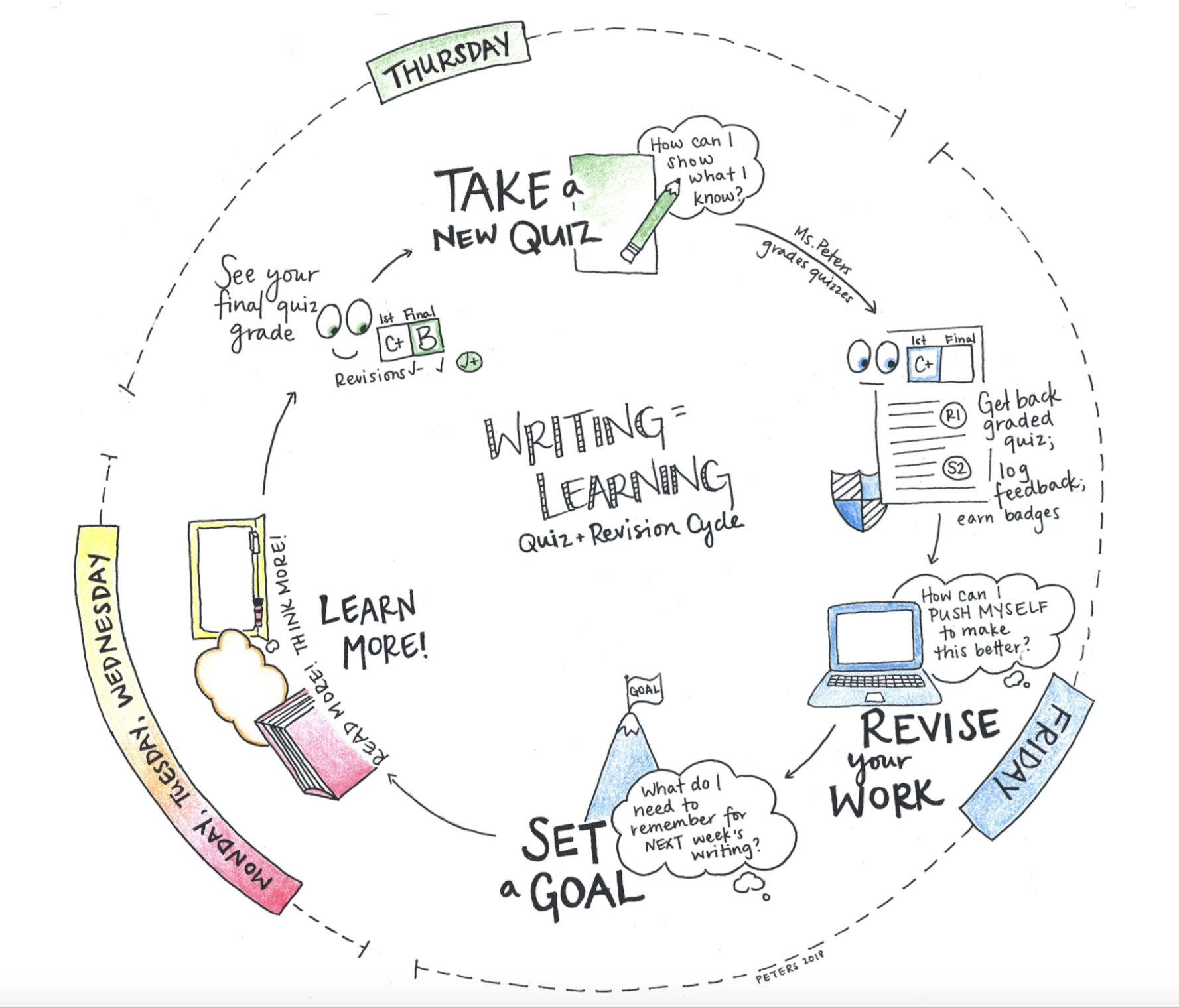Reimagining the Writing Cycle
The secret to teaching writing is to engage writers’ thinking… but sitting down to give ninety students individualized feedback is not a delight.
A promising practice guide for offering feedback on student writing.
Developed in partnership with BTR graduates, especially:
Heather Andrews, Dr. Tasheena Burnett, Amrita Dani, Amie Gramo, Becca Harbeson, Kelsey McChane,
and the ELA teachers at Madison Park High School
Why reimagine writing feedback?
When we read our students’ writing, we see that their level of mastery varies wildly, with some students crafting sophisticated arguments using complex sentences, and others still mastering the basics. It takes dedicated time to read and attend to the range of student voices and writing choices.
And giving feedback is inherently more efficient when the writing looks the same. Seeking ease and efficiency, then, teachers might become over reliant on graphic organizers, templates or step-by-step instruction leading to writing that is formulaic, lacking original thought or voice.
Therein lies the challenge. The writing teacher’s source of joy— delighting in authentic writing and voice— is also the teacher’s curse. How do we give each student the feedback they need, in the time they need it, and get through all the stacks of writing?
The system
In this guide, we offer a new vision: a reimagining of the writing process as a deliberate cycle in which students write and revise shorter pieces more frequently and, in doing so, learn the skills that transfer in writing.
The system boils down to:
Each week, students compose a short, on-demand writing piece, possibly part of a more comprehensive quiz.
The teacher grades the quiz and gives individualized, specific writing feedback using a set of “feedback codes,” used consistently throughout the year.
Within one to two days of the quiz, students receive their graded work back and spend time in class revising their writing, using teacher feedback.
Students reflect on their feedback and revisions and set a goal for the following week.
The following week, students get their quiz back with a final grade and take the next week’s quiz.
E. Peters (2018)
Who is this for?
TEACHERS.
Using feedback “codes” to guide writing revision creates a quick, streamlined method of giving feedback, making it possible for the teacher to turn the work around quickly.
STUDENTS.
Students have a reusable structure in which to read and interpret feedback on their writing, and create their own action steps when revising their first drafts.
LEARNING COMMUNITIES.
While this routine can be adopted by a single teacher at a single school, developing community practices can help make the work more sustainable (and joyful!). “Community and Coaching” (Chapter 5 of this guide) discusses the work that groups of teachers, coaches, and departments can do together to help jumpstart these feedback practices and keep them going throughout the year.


